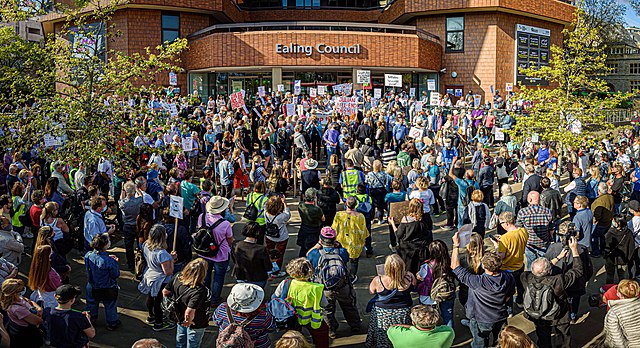Environmental direct action in the United Kingdom
The modern environmental direct action movement in the United Kingdom started in 1991 with the formation of the first UK "Earth First!" group for a protest at Dungeness nuclear power station. Within two years, there were fifty Earth First groups and activists linked with other parties in the road protest movement. There were large camps at Twyford Down and the M11 link road protest. By 1997, the Government had decided to reduce its road-building plans by two thirds.
A policed march at the Balcombe drilling protest in August 2013
Eviction of a treehouse at a camp resisting the Newbury Bypass.
Camp for Climate Action with Drax power station in background
Road protest in the United Kingdom
Road protests in the United Kingdom usually occur as a reaction to a stated intention by the relevant authorities to build a new road, or to modify an existing road. Reasons for opposition to opening new roads include a desire to reduce air pollution and thus not wishing to incentivise increased or sustained car usage, and/or a desire to reduce or maintain low noise pollution by not having or increasing the use of motor vehicles in the area of the planned/proposed road. Protests may also be made by those wishing to see new roads built, changes made to existing roads, or against restricting their use by motor traffic.
Protest against Low Traffic Neighbourhood policy, Ealing, London, 2021
Uncompleted Motorway Junction on the M23 towards London. Work on London radial motorways stopped in the 1970s.
Eviction of the Tot Hill camp, Newbury bypass, 1996
Road protest, Bilston Glen, Scotland






